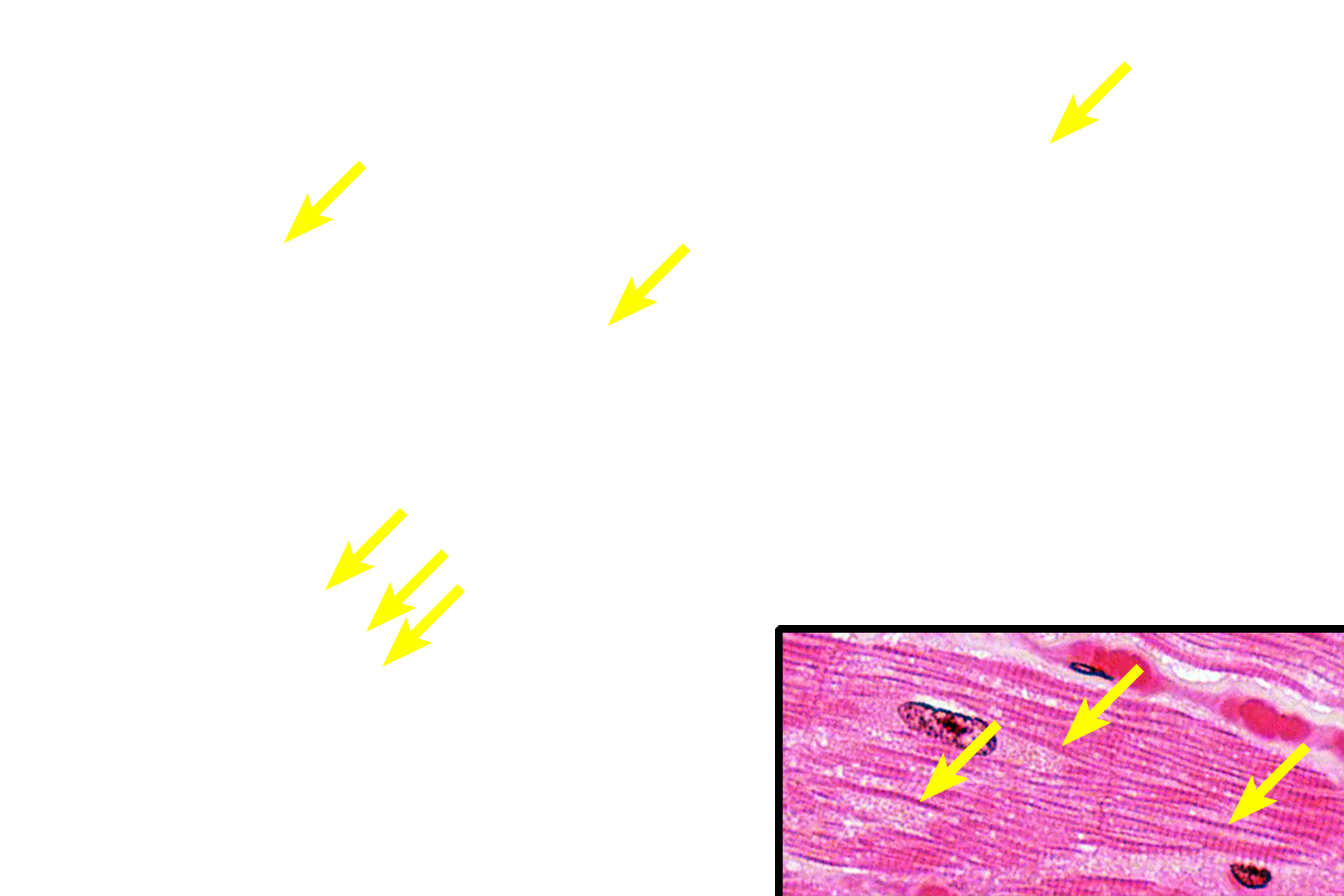
Cardiac muscle
This longitudinal section of cardiac muscle fibers demonstrates two of their distinctive features, centrally located nuclei and intercalated discs. Intercalated discs are complex cell junctions between the ends of adjacent cardiac muscle fibers. Components of intercalated disc cannot be resolved with the light microscope. 400x

Muscle fibers
This longitudinal section of cardiac muscle fibers demonstrates two of their distinctive features, centrally located nuclei and intercalated discs. Intercalated discs are complex cell junctions between the ends of adjacent cardiac muscle fibers. Components of intercalated disc cannot be resolved with the light microscope. 400x

Nuclei
This longitudinal section of cardiac muscle fibers demonstrates two of their distinctive features, centrally located nuclei and intercalated discs. Intercalated discs are complex cell junctions between the ends of adjacent cardiac muscle fibers. Components of intercalated disc cannot be resolved with the light microscope. 400x

Intercalated discs
This longitudinal section of cardiac muscle fibers demonstrates two of their distinctive features, centrally located nuclei and intercalated discs. Intercalated discs are complex cell junctions between the ends of adjacent cardiac muscle fibers. Components of intercalated disc cannot be resolved with the light microscope. 400x

Myofibrils >
Cardiac muscle fibers have fewer myofibrils compared with skeletal muscle fibers and thus their spacing allows them to be seen individually. The striations are evident along the length of each myofibril. Inset, 1000x

- Striations
Cardiac muscle fibers have fewer myofibrils compared with skeletal muscle fibers and thus their spacing allows them to be seen individually. The striations are evident along the length of each myofibril. Inset, 1000x

Capillaries >
Cardiac muscle tissue is richly supplied with capillaries.